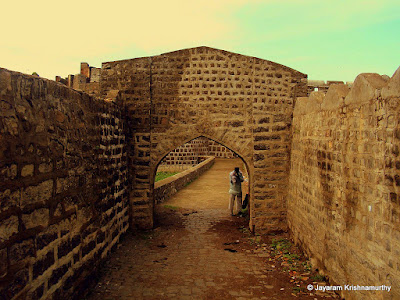Height: 3400 feet above MSL
Base Village: Belmachi , Ibrahimpur
Difficulty : Medium
After completing Chandan I went to Vandan fort. The route to Vandan from Chandan is via the col between Chandan and Vandan. One has to traverse Chandan fort keeping the fort to your right and get to the col between Chandan and Vandan and then once at the col we can see a rock face in front of us. The route to the top would be taking a right from the rock face and getting on top of the face and then a route towards the left keeping the fort to your right.

On going ahead one can see the main door of Vandan fort but the approach to the door is no longer present as its destroyed and we climb from the right of the main door. The way is through rocks and bushes so be careful.

Once on top of the fort you get to the lower level of the fort where there is nothing and one has to climb steps to go to the main upper level of the fort. On top there is nothing to see except a dargah and a tomb of some saint. Also a granary on top. Other than that Vandan is covered in tall bushes as not many people go there. There is also a hill in the middle of the fort with nothing on top. Most of the buildings there were destroyed during British rule.
There are a lot of huge water tanks on top but not one of them is potable except one or two of them.
After completing Vandan fort I traversed back the whole route upto Ibrahimpur as I had kept my bike there. This trek was done after a long time and was very good.
History: Vandan fort was constructed as the same time during Chandan fort and there's no specific history about that fort.




















































